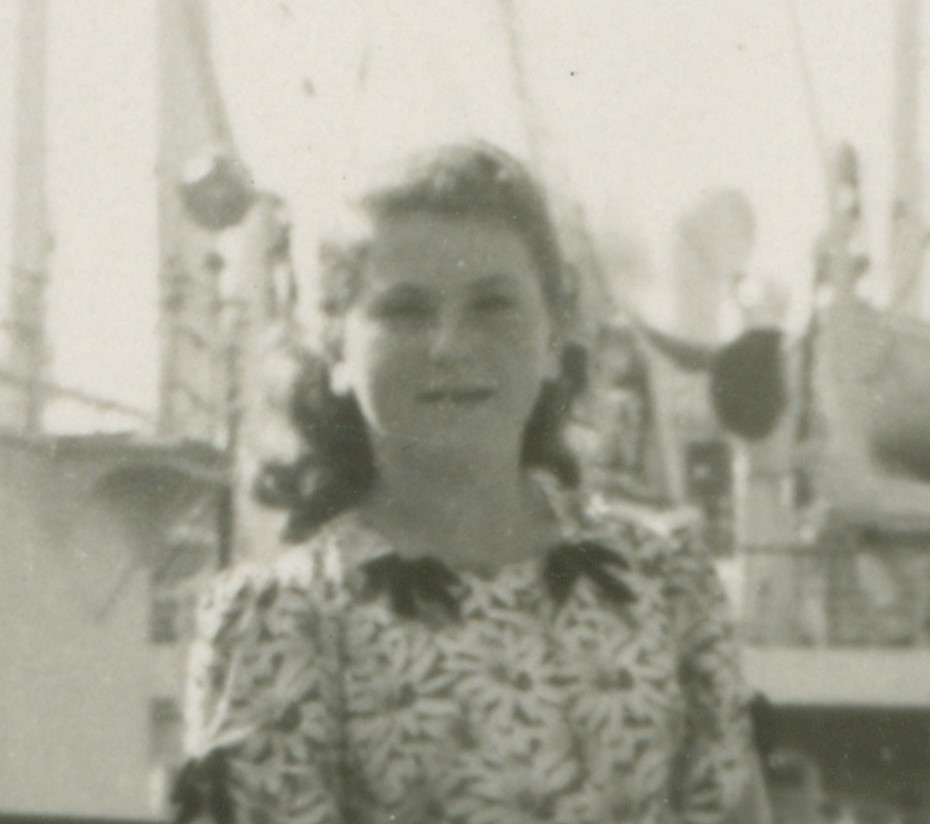
Ruth Elenberg Eisenberg was born Rachel Sygal Epstein on April 15, 1935 in Skalat, a town in Eastern Galicia (now Ukraine). Her father Hersch owned a tannery, and her mother Fayga was a homemaker. Ruth was the youngest of six children. Skalat was home to a large, mostly orthodox Jewish population. Ruth eagerly anticipated Shabbat each week, a day she celebrated with family.
In July 1941, Nazis occupied Skalat, and instituted antisemitic restrictions. Ruth could not begin school due to the occupation. Nazi authorities confiscated Hersch’s business in 1942, but the family was permitted to stay in their house, which became part of the newly established ghetto. Fearing violence, her family converted their basement into a hiding place.
In October 1942, SS officers carried out a night of terror in Skalat called, “The Wild Action.” Ruth’s family, and their friends, the Sass family, hid in the basement. Ruth’s older sister Malkah was unable to prevent her baby from crying, leading the SS to their hiding place. Two of the Sass brothers and Ruth’s brother Yitzhak knocked down a brick wall, and as the Nazis entered the basement, members of both families escaped. Ruth and her mother ran into a barn and hid in a barrel. However, Malka and her baby, and Ruth’s sister Miriam, as well as her father Hersch were deported to camps. Hersch was killed at Janowska labor camp.
The SS and their collaborators liquidated the Skalat ghetto on June 9, 1943. Ruth and the remaining members of the Sygal Epstein and Sass families hid in a crawl space below the Sygal Epstein’s house. Although the officers stuck bayonets through the floor, injuring one of the Sass boys, they were unable to find the two families below.
Following the liquidation, Ruth’s older sister, Bronia, was sent to the local labor camp, and she covertly brought Ruth inside. Ruth hid in a bed under the mattress to avoid detection. That night, Marko Baranofski, a non-Jewish friend of the Sass’, smuggled Ruth out of the camp. Bronia joined her later. Ruth, her family, and friends hid in the Baranofskis’ attic for approximately one month. When the neighbors grew suspicious, Yitzhak and two of the Sass brothers left to locate a hiding place in the forest. Ruth and the others laid in trenches in the Baranofskis’ potato field for a day, awaiting the men’s return. Her mother, Fayga, was too weak to make it to the forest and remained in the field where she ultimately died.
In December 1943, after three months in the forest, one of the Sass boys arranged for Ruth, Bronia, and the Sass women to hide with the Shevshuks, a Ukrainian family from a nearby village. Although Mr. Shevshuk was a member of Bandera, a Ukrainian nationalist militia known to commit antisemitic violence, he did not harm the women whom he was hiding. Yitzhak, unable to find a hiding place, was killed during a bombing towards the end of the war.
In March 1944, Soviet troops liberated the region. Ruth and Bronia returned to Skalat and reunited with their brother Szamo. The siblings left Skalat, eventually arriving at a displaced persons camp in Cremona, Italy in the fall of 1945. From the displaced persons camp, they contacted their uncle who had immigrated to the United States, and he helped them leave Europe.
Ruth arrived in Hoboken, New Jersey on September 24, 1947, and she lived with relatives and attended school until her brother and sister arrived from Cremona. In 1953, Ruth married Sidney Sass, and they had two children. Every surviving Sygal Epstein married a Sass. Today Ruth is a volunteer at the United States Holocaust Memorial Museum.
